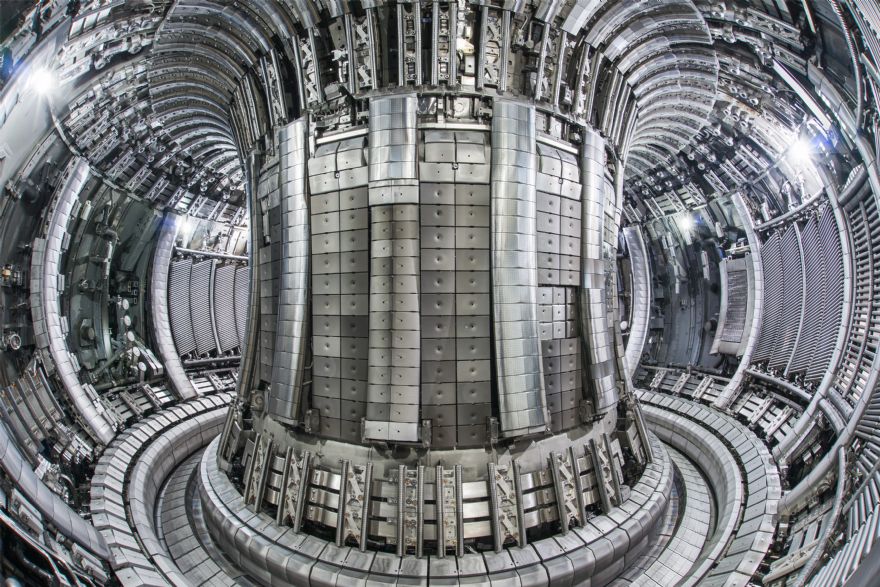
The Joint European Torus (JET), one of the world’s ‘largest and most powerful fusion machines’, has demonstrated the ability to reliably generate fusion energy and set a world-record in energy output, achieving what is regarded as a ‘significant milestone in the field of fusion science and engineering’. In JET’s final deuterium-tritium experiments (DTE3), high fusion power was consistently produced for 5sec, resulting in a record of 69 megajoules using just 0.2 milligrams of fuel.
JET is a tokamak, which uses powerful magnetic fields to confine a plasma in the shape of a doughnut. Most approaches to creating commercial fusion favour the use of two hydrogen variants – deuterium and tritium. When deuterium and tritium fuse together they produce helium and vast amounts of energy, a reaction that will ‘form the basis of future fusion powerplants’.
Ambrogio Fasoli, EUROfusion’s programme manager (CEO), said: “Our successful demonstration of operational scenarios for future fusion machines like ITER and DEMO, validated by the new energy record, instil greater confidence in the development of fusion energy. Beyond setting a record, we achieved things we have never done before and deepened our understanding of fusion physics.”
Stable stateEmmanuel Joffrin, EUROfusion’s Tokamak ‘exploitation task force leader’ from CEA, added: “We not only demonstrated how to soften the intense heat flowing from the plasma to the exhaust but also showed in JET how we can get the plasma edge into a stable state, thus preventing bursts of energy reaching the wall. Both techniques are intended to protect the integrity of the walls of future machines. This is the first time that we have ever been able to test those scenarios in a deuterium-tritium environment.”
Over 300 scientists and engineers from EUROfusion — a consortium of researchers across Europe, contributed to these landmark experiments at the UK Atomic Energy Authority (UKAEA) site in Oxford. Andrew Bowie, the UK Minister for Nuclear and Networks, said: “JET’s final fusion experiment is a fitting swansong after all the groundbreaking work that has gone into the project since 1983. We are closer to fusion energy than ever before thanks to the international team of scientists and engineers in Oxfordshire. However, the work doesn’t stop here. Our ‘Fusion Futures’ programme has committed £650 million to invest in research and facilities, cementing the UK’s position as a global fusion hub.”
Meanwhile, Ian Chapman — UKAEA’s CEO — said: “JET has operated as close to powerplant conditions as is possible with today’s facilities, and its legacy will be pervasive in all future powerplants. It has a critical role in bringing us closer to a safe and sustainable future. JET’s research findings have critical implications not only for ITER — a fusion research mega-project being built in the south of France — but also for the UK’s STEP prototype powerplant, Europe’s demonstration powerplant, DEMO, and other global fusion projects, pursuing a future of safe, low-carbon, and sustainable energy.”